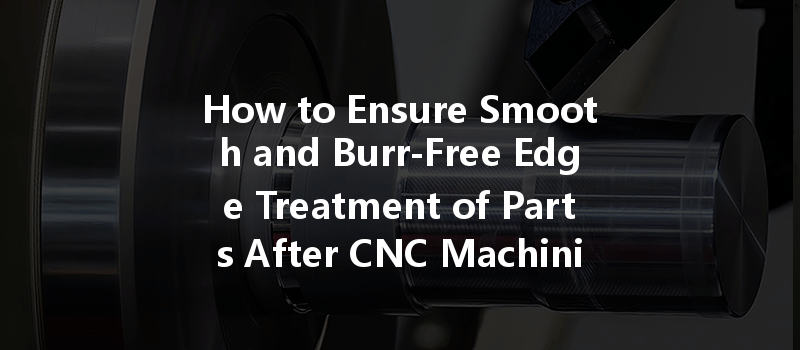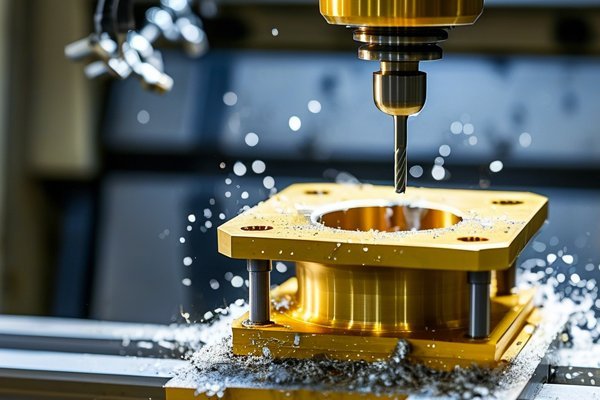In the intricate world of manufacturing, especially with CNC (Computer Numerical Control) machining, the details matter more than ever. One of the most critical aspects of this process is achieving smooth and burr-free edge treatment for precision parts. At YL Machining, we delve deep into this vital subject, helping you understand why it matters and how you can master it.
The Importance of Edge Treatment in CNC Machining
What Are Burrs, and Why Do They Matter?
Burrs are unwanted protrusions or rough edges that are formed during manufacturing processes such as CNC machining. Left untreated, these imperfections can affect the performance, aesthetics, and durability of the finished parts. In sectors such as aerospace, automotive, and medical devices, where precision and safety are paramount, burrs can lead to catastrophic failures or reduced functionality.
The Ripple Effect of Burrs
Burrs can lead to:
By understanding these implications, manufacturers can prioritize burr-free edge treatment as a fundamental element of their production workflow.
Techniques for Achieving Smooth and Burr-Free Edges
Achieving a smooth surface without burrs involves a combination of careful machine settings, tool selection, and post-processing techniques. Here, we break down the essential methods.
Tool Material
The material composition of the cutting tool plays a significant role in minimizing burr formation:
Tool Geometry
Feed Rate and Speed
The relationship between feed rate, cutting speed, and burr formation is complex. Too high of a feed rate can lead to poor finishes, while too low can cause excessive heat, resulting in thermal burrs.
Depth of Cut
Adjust the depth of cut carefully. A shallow cut may result in suboptimal surface finishes, while a deep cut may lead to increased burr generation due to the raised cutting forces.
Adaptive Machining
Adaptive machining techniques utilize real-time feedback from the machining process. This allows adjustments mid-operation, ensuring optimal conditions to minimize burr formation.
Multiaxis Machining

Incorporating multiaxis CNC machining allows for more complex geometries to be machined in fewer setups. This can lead to reduced burr formation by minimizing the number of tool paths and transitions.
Even with the best CNC setup, the fight against burrs isn’t over once machining is complete. Several post-processing methods can ensure that edges remain smooth and free from imperfections.
Deburring
Surface Finishing
Implementing surface finishing techniques can significantly enhance the quality of parts.
Implementing a rigorous quality control (QC) process is key to ensuring that parts are produced to specifications, including burr-free edges.
Measurement Techniques
Utilizing advanced measurement techniques to examine part edges:
Continuous Improvement
Never stop improving! Utilize data analytics to refine your processes continuously. Create a feedback loop involving the production team, quality inspectors, and designers to optimize tooling and process parameters regularly.
CNC Software Innovations
Cutting-edge CAM (Computer-Aided Manufacturing) software can significantly contribute to burr reduction through:
Automation
Incorporating robots for handling parts post-machining can streamline the deburring process and reduce manual errors, ensuring that each part is inspected and treated uniformly.
: The Path to Perfection
At YL Machining, we understand that the journey to achieving smooth and burr-free edges is a multifaceted process. Every detail—be it tool selection, machining parameters, or post-processing—plays a critical role in the overall outcome.
By fostering a culture of continuous learning, investing in the latest technology, and adhering to rigorous quality control measures, manufacturers can not only meet but exceed the expectations of precision part production. The elimination of burrs is not just a cosmetic issue; it’s an essential step toward ensuring the highest standards of quality, safety, and efficiency.
As we look ahead in the machining industry, let us commit to pursuing excellence together—one burr-free edge at a time.
—






